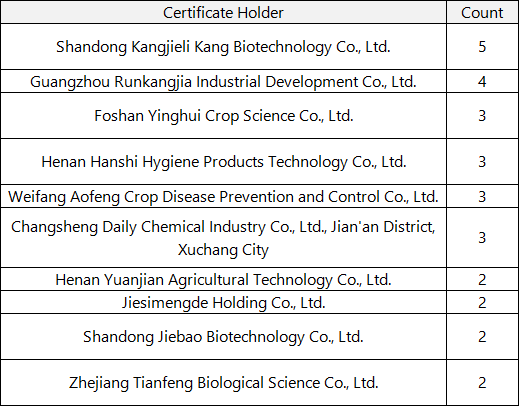Decoding the New Trends in China's 2025 Public Health Insecticide Market: Safety and Precision Take Center Stage
The first half of 2025 has revealed clear evolutionary trends in China's public health insecticide market. According to the latest data, the 78 newly approved products not only highlight new technological hotspots but also reflect a steady market shift towards safer, more precise, and more user-friendly solutions.
Overall Trends: Low-Toxicity Products Dominate as Formulation Innovations Cater to Diverse Scenarios
A prominent feature of this year's new registrations is the prioritization of safety. Over half (46) of the new products are classified as "low toxicity," with the remaining 32 rated as "slight toxicity," indicating that the industry is proactively responding to growing consumer demand for health and environmental protection.
From a product form perspective, a clear trend towards formulation diversification is evident, designed to meet a wide range of needs from large-scale pest control to daily household protection:
Professional Spraying Sector: Suspension concentrates (SC) lead the pack with 18 registrations, establishing them as the top choice for professional residual spraying applications and underscoring their central role in public health and the Pest Control Operator (PCO) industry.
Targeted Control: Bait formulations follow closely with 13 registrations, primarily focused on cockroach and ant control. This reflects a market preference for solutions that enable precise luring and killing, avoiding broad-spectrum application.
Personal Care Market: The steady growth of mosquito repellents (8 registrations) directly addresses the strong consumer demand for personal and family protection.
Core Ingredient Analysis: Neonicotinoids and Eco-Friendly Repellents Emerge as "Twin Engines"
A deeper analysis of product formulations reveals the rise of two particularly noteworthy active ingredients, each representing cutting-edge solutions for indoor integrated pest management and personal protection:
Dinotefuran: The "Ace" of Indoor Pest Management
As a representative of neonicotinoid insecticides, Dinotefuran stands out with the highest number of registrations. This class of ingredients, known for its combined advantages of high efficacy, low toxicity, broad spectrum, and long-lasting effects, has become the top-selling insecticide category globally. In the newly approved products, it is primarily used to control indoor pests such as bed bugs, ants, cockroaches, flies, and fleas, making it a core weapon for tackling complex indoor pest problems.
Picaridin: The "Green Guardian" of Personal Protection
The impressive performance of Picaridin represents the other end of the market spectrum. As a novel and eco-friendly repellent, it is highly regarded for its efficacy and gentleness on the skin, making it a key component in high-end mosquito repellents. Its registered targets are public health mosquitoes, which serves as a reminder for consumers that checking the active ingredient is crucial for ensuring both effectiveness and safety when purchasing repellent products.
Furthermore, combination formulations are also showing strong momentum. Classic combinations like "Thiamethoxam + Lambda-cyhalothrin" aim to overcome potential resistance issues associated with single ingredients by leveraging synergistic effects, thereby providing more durable and comprehensive protection.
Market Landscape: Industry Leaders Drive Innovation
The data also shows that new product registrations are concentrated in the hands of a few technologically advanced companies. This indicates that under increasingly stringent regulations and evolving market demands, companies with strong R&D capabilities and market insight are leading the innovation and development of the entire public health insecticide industry.


